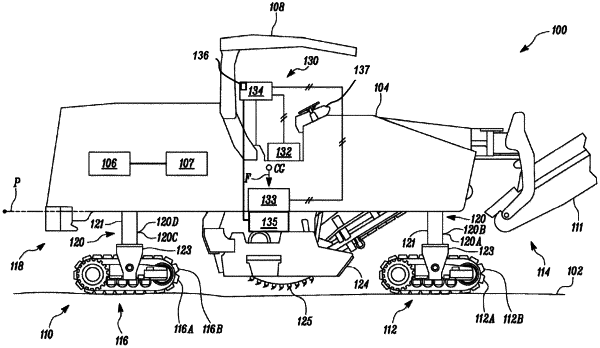| CPC E01C 23/088 (2013.01) [E01C 23/127 (2013.01); G05B 2219/37434 (2013.01)] | 17 Claims |

|
7. A method comprising:
sensing, in real time, using a vibration sensor disposed relative to a rotor of a milling machine, vibration associated with a cutting operation of the rotor of the milling machine, said sensing using the vibration sensor including sensing vibration amplitude and/or vibration frequency associated with the cutting operation of the rotor;
determining during the cutting operation, using a processor, in real time, whether the sensed vibration associated with the cutting operation of the rotor indicates a change in material hardness of material being cut by the rotor during the cutting operation based on vibration data from said sensing the vibration, the change in material hardness being above a predetermined hardness threshold amount, said determining including determining whether the vibration amplitude and/or the vibration frequency spikes above respective predetermined levels indicating the change in material hardness; and
controlling, using the processor, cutting operations of the milling machine under a condition where said determining indicates the change in the material hardness,
wherein said controlling the cutting operations includes controlling speed of the milling machine moving in a cutting direction, cutting level and/or depth of the rotor, and/or rotational speed of the rotor,
wherein said determining includes identifying that the change in material hardness represents a change from a first material to a second material harder than the first material, and
wherein a target cutting setting for the cutting operation in the second material is the same as a target cutting setting for the cutting operation in the first material and includes a same depth of cut for the rotor.
|